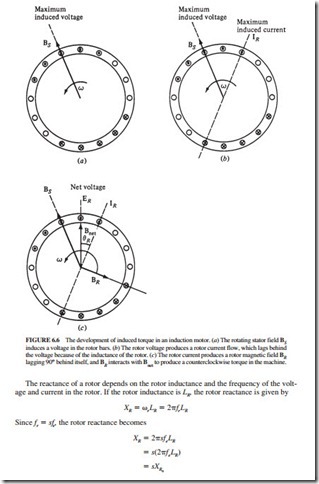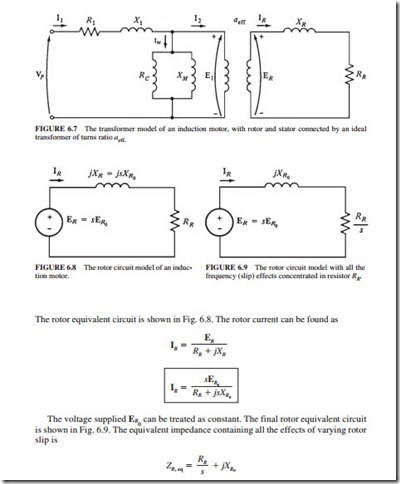THE EQUIVALENT CIRCUIT OF AN INDUCTION MOTOR
It is possible to derive the equivalent circuit of an induction motor from the knowledge of transformers. Figure 6.7 illustrates the equivalent circuit, representing the operation of an induction motor. The effective turns ratio aeff couples the primary internal stator voltage E1 to the secondary ER. A current flow in the shorted rotor (or secondary) is produced by ER.
The Rotor Circuit Model
In induction motors, the higher the relative motion between the rotor and the stator magnetic fields, the higher the resulting rotor voltage. The relative motion is largest when the rotor is stationary. This is called the locked– or blocked-rotor condition. The induced voltage in the rotor is at maximum during this condition. When the rotor moves at the same speed as the stator magnetic field (no relative motion), the induced voltage in the rotor is zero.
If the induced rotor voltage at locked-rotor conditions is E , the induced voltage at any The rotor has a resistance and a reactance. Its resistance RR is constant independent of slip while the rotor reactance depends on the slip.
At high slips (rotor speed is much lower than normal operating speed or synchronous speed), XR is much larger than RR/s. The rotor current approaches a steady-state value. At low slips (rotor speed is near normal operating speed or synchronous speed), the resistive term RR/s is much larger XR0 The rotor resistance is the dominant term, and the rotor current


